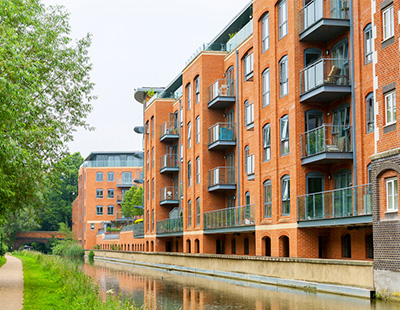We take a closer look at its findings below…
New-build market share plummets
The figures show that back in 2010, new-build homes accounted for 9.6% of all sales.
Disregarding a negligible decline of 0.2% from 2013 to 2014, new-build market share increased steadily and consistently to a high of 13% in 2019.
However, in 2020 the sector’s market share dropped to just 8.8% of all sales. Not only is this 4.1% annual decline the biggest drop in ten years, but it also sunk the new-build sector’s market share to the lowest point of the decade.
With the exception of Northern Ireland, all regions of the UK have seen the proportion of property transactions attributed to the new-build sector fall in 2020, with the North East (6.3%), East of England (5.2%) and North West (5%) seeing the largest year on year decline.
What’s the cause?
The problems posed by the Covid-19 pandemic have no doubt played some part in this decline and while it has been unable to dampen spirits on the housing market, it did hamper construction efforts and force developers and investors to hesitate just enough to delay projects that were scheduled to complete during the pandemic year.
The second factor is the government’s introduction of the Cladding External Wall System (EWS) certificate in 2019. Following the Grenfell Tower tragedy of 2017, the EWS certificate was designed to ensure that the external cladding of high rise buildings is safe in the event of fire.
But general consensus is its introduction was handled clumsily and developers and buyers have been left waiting for months, if not longer, to have their properties inspected and certified by a very small number of qualified inspectors.
Without the certification, homes cannot be purchased and many buyers who had agreed mortgages in principle have been unable to complete on their purchase until certification was granted.
As a result, while the appetite for new-build homes remains high, the number of transactions has declined considerably.
Bethan Griffiths, chief operating officer of Warwick Estates, explains: “A huge level of buyer demand spurred by the stamp duty holiday has helped revive buyer demand but such unprecedented levels of market activity have seen resources stretched and, while homes are going under offer at an alarming rate, there have been substantial delays during the back end of the transaction process.”
“For the new-build sector, the situation has been exacerbated by the requirement of an EWS form and the ability to obtain these has become extremely difficult, with delays of six months or more in the worst cases.”
He concludes: “Despite attempts to remedy the situation by removing the requirement on buildings of 18 metres or less, we’re yet to see any real headway being made and the issue continues to prove problematic for those operating within the industry.”








.png)



.jpg)






Join the conversation
Be the first to comment (please use the comment box below)
Please login to comment